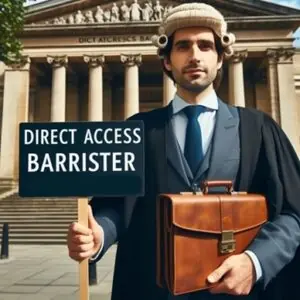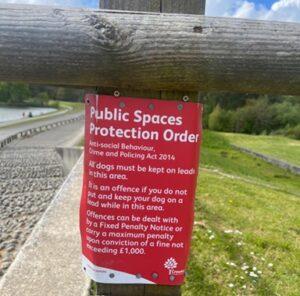Driving offences in the UK are regulated by a number of statutes, including the Road Traffic Act 1988, the Road Vehicles (Construction and Use) Regulations 1986, the Motor Vehicles (Driving Licences) Regulations 1999, and the Motor Vehicles (Insurance Requirements) Regulations 2011, among others.
Some of the most common driving offences in the UK include:
- Speeding: Driving above the speed limit is one of the most common driving offences in the UK. The maximum speed limit on most roads in the UK is 70mph, but there are lower speed limits for certain roads, such as 20mph in built-up areas. The penalty for speeding can range from a fixed penalty notice to a court appearance and a fine.
- Drink-driving: Driving under the influence of alcohol or drugs is a serious offence in the UK. The drink drive limit for blood alcohol concentration (BAC) varies in the UK. In England, Wales and Northen Ireland its is 80mg/100ml but in Scotland 50mg/100ml. The penalty for drink-driving can include a fine, a driving ban, and even imprisonment.
- Using a mobile phone while driving: It is illegal to use a handheld mobile phone while driving in the UK. This includes texting, making calls, or using the internet. The penalty for using a mobile phone while driving can include a fine, penalty points on your licence, and even disqualification from driving.
- Dangerous driving: Dangerous driving is a serious offence that can lead to a custodial sentence. Dangerous driving includes driving in a way that could cause harm to other people, such as driving at excessive speed or ignoring traffic signals.
- Driving without insurance: It is a legal requirement to have valid motor insurance in the UK. Driving without insurance can lead to a fine, penalty points on your licence, and even disqualification from driving.
There are many other driving offences that are regulated by UK law, such as driving without a licence, failing to stop after an accident, and driving with defective brakes or tyres.
If you are accused of a driving offence in the UK, it is important to seek legal advice from a solicitor who specializes in motoring offences.
A solicitor can help you understand your legal rights, build a defence, and represent you in court if necessary.
The Road Traffic Act 1988 is the primary piece of legislation that regulates driving offences in the UK. The act sets out the legal requirements for driving, such as the requirement to have a valid driving licence and motor insurance, as well as the penalties for driving offences.
The Road Vehicles (Construction and Use) Regulations 1986 is another important piece of legislation that sets out the requirements for the construction and maintenance of motor vehicles. The regulations cover issues such as the use of seat belts, the condition of tyres and brakes, and the use of lighting and signalling equipment.
The Motor Vehicles (Driving Licences) Regulations 1999 sets out the requirements for obtaining and holding a driving licence in the UK. The regulations cover issues such as the minimum age for driving, the types of vehicles that can be driven with different categories of licence, and the penalty points system.
The Motor Vehicles (Insurance Requirements) Regulations 2011 sets out the legal requirements for motor insurance in the UK. The regulations require all drivers to have at least third-party motor insurance, which covers damage to other people and their property.
If you are accused of a driving offence in the UK, it is important to seek legal advice from a solicitor who specializes in motoring offences. A solicitor can help you understand your legal rights, build a defence, and represent you in court
The Road Vehicles (Construction and Use) Regulations 1986 have been amended a number of times since their introduction. Some of the key amendments to the regulations include:
- The Road Vehicles (Construction and Use) (Amendment) Regulations 1992: These regulations amended the 1986 regulations to include new requirements for the construction and use of trailers. The amendments also introduced new requirements for the use of lighting and signalling equipment on vehicles.
- The Road Vehicles (Construction and Use) (Amendment) Regulations 1994: These regulations amended the 1986 regulations to include new requirements for the condition of tyres on vehicles. The amendments also introduced new requirements for the use of seat belts and child restraints.
- The Road Vehicles (Construction and Use) (Amendment) Regulations 1995: These regulations amended the 1986 regulations to include new requirements for the use of audible warning devices on vehicles. The amendments also introduced new requirements for the use of hazard warning lights on vehicles.
- The Road Vehicles (Construction and Use) (Amendment) Regulations 1996: These regulations amended the 1986 regulations to include new requirements for the construction and use of motorcycles. The amendments also introduced new requirements for the use of helmets and protective clothing by motorcycle riders.
- The Road Vehicles (Construction and Use) (Amendment) Regulations 2003: These regulations amended the 1986 regulations to include new requirements for the construction and use of heavy goods vehicles. The amendments also introduced new requirements for the use of speed limiters on heavy goods vehicles.
- The Road Vehicles (Construction and Use) (Amendment) Regulations 2014: These regulations amended the 1986 regulations to include new requirements for the construction and use of vehicles with emissions control systems. The amendments also introduced new requirements for the use of electronic stability control systems on certain types of vehicles.
These amendments and others have been introduced to improve road safety and ensure that vehicles are constructed and used in a way that is safe and efficient. It is important for all drivers and vehicle owners to be aware of these regulations and comply with them to avoid potential legal penalties.
If you are unsure about whether your vehicle complies with the regulations or you have been accused of a motoring offence that relates to the regulations, it is important to seek legal advice from a solicitor who specialises in motoring offences.
The most infamous motoring offender is Katie Price from Sussex.
According to an article on the Daily Mail Katie Price has been in court on at least 16 occasions for her driving offences but has never once been jailed. She must have really good solicitors, a systemic failure of the CPS to properly prosecute her or the utter incompetence of the Sussex courts. It seems Sussex Police are also incapable of keeping her off the road.
Read the reviews of Gavin Howe Barrister
“He is awful, underhanded and should not be practising law!”
Latest Articles
- Direct Access BarristerA Direct Access Barrister, also known as a Public Access Barrister, enables members of the public to directly instruct a… Read more: Direct Access Barrister
- What is a Public Spaces Protection Order (PSPO)?A Public Spaces Protection Order (PSPO) is a powerful tool introduced in 2014 under the Anti-Social Behaviour, Crime and Policing… Read more: What is a Public Spaces Protection Order (PSPO)?
- Transparency and Open Justice BoardThe Lady Chief Justice of England and Wales, Dame Sue Carr, has created a new Transparency and Open Justice Board.… Read more: Transparency and Open Justice Board
- What is a Paralegal ?A paralegal is a legal professional who performs tasks that require knowledge of legal concepts but does not hold the… Read more: What is a Paralegal ?




